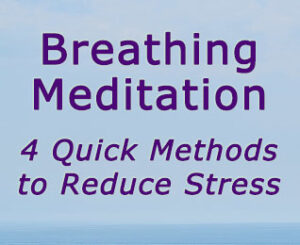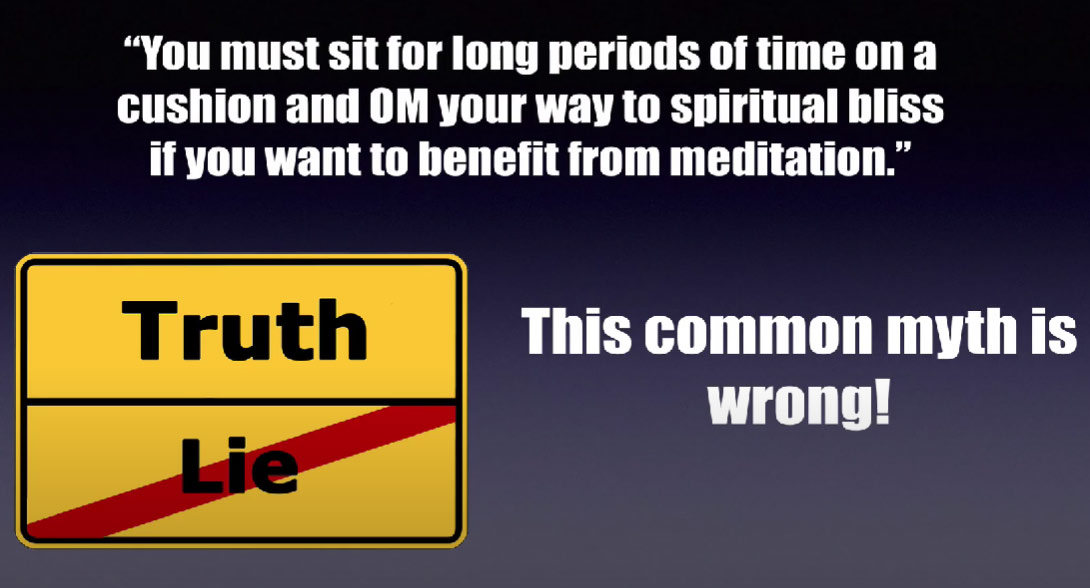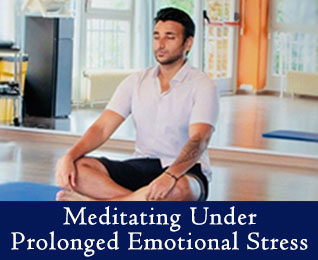The following four breath meditation methods are derived from Dr. Carrington’s Learn to Meditate course manual. You’ll also find some helpful editor comments and a link to an instruction video on how to do short passive breathing meditations throughout your day.
Breathing Method Number 1
Dr. Herbert Benson, a leading meditation researcher and founder of the Mind/Body Medical Institute at Massachusetts General Hospital in Boston developed this method of creating the ‘relaxation response’.
- Sit quietly in a comfortable position.
- Close your eyes.
- Deeply relax all your muscles, beginning at your feet and progressing up to your face (see Progressive Muscle Relaxation in the Learn to Meditate course manual). Allow them to stay relaxed.
- Breathe through your nose and become aware of your breathing. As you breathe out, say the word ‘ONE’, silently to yourself. For example, breathe IN . . . OUT, ‘ONE’; IN . . . OUT, ‘ONE’; etc. Breathe easily and naturally.
- Continue meditating in this manner for a duration of time suggested on the Learn to Meditate MP3s and manual. Use the same general instructions for practicing meditation as you would if you were continuing with the technique described in that instruction. When you finish, sit quietly for several minutes, at first with your eyes closed and later with your eyes opened.
- Do not worry about whether you are successful in achieving a deep level of relaxation. Maintain a passive attitude and permit relaxation to occur at its own pace.
When distracting thoughts occur, try to ignore them by not dwelling upon them – simply say to yourself something akin to ‘oh, well’, and return to repeating ‘one.’
With practice, the response should come with little effort. If you wish, you can make up a suitable mantra of your own, substitute one of the mantras in the Learn to Meditate manual, or use a short prayer or religious phrase in place of the word ‘one.’
Editor’s Comments: Some common biblical and historical Christian meditation prayer phrases include:
“Jesus” – Christians everywhere would agree that there is power in the name of Jesus.
“Abba” – Found in the New Testament as used by Jesus and Paul to address God as an expression of God’s fatherly care.
“Maranatha” – This is an ancient Christian phrase from the Aramaic language with 3 varying meanings; “Our Lord-come!”, “Our Lord is coming”, and “Our Lord has come.” It is originally two Aramaic words; marana tha.
“The Jesus Prayer” – Variations of the prayer statements include, “Lord Jesus, Son of God, have mercy upon me.” “Lord Jesus Christ, Son of God, have mercy on me, a sinner.” “Lord Jesus Christ, Son of God, have mercy on us sinners.”
In Dr. Carrington’s Freedom in Meditation she wrote:
“In some instances, prayer is intentionally structured in a form belonging strictly to the realm of meditation. In Western monasteries, repetition of words in praise of God has been widely used to evoke a special state in which the outer world is shut out and the person is transported into an exalted sense of closeness with God.
The ‘Prayer of the Heart,’ used by Russian monks and devout lay people in pre-revolutionary Russia, is an example of this. This prayer was used to ‘purify the intellect’ by means of a passive attitude and the repetition, on each successive out-breath, of the phrase ‘Lord Jesus Christ, have mercy on me’. By this means the mind was thought to become emptied of all thoughts, images, and passions.”
More about the Prayer of the Heart…
Breathing Method Number 2
This form of breathing meditation was developed by Dr. Robert Woolfolk of the Department of Psychology at Rutgers University:
Take a single, slow, deep breath, thinking to yourself the word ‘in’ as you breathe in, and ‘out’ as you breathe out. Do not intentionally influence your breathing but let it go its own way, fast or slow, shallow, or deep, whatever way it wishes. As you do so, just think to yourself ‘in’ on every in-breath and ‘out’ on every out-breath.
When doing this breathing meditation, try to extend the sound you are repeating in your mind so that at all points during this meditation you are either thinking ‘in . . . n . . . n . . . n . . .’ or ‘ouuuuuuuut . . .’ in long, easy sounds. If the word ‘out’ sounds too abrupt because it ends in ‘t’ and this is distracting (it is for some people), you can substitute the syllable ‘ah’ for the word ‘out’ – saying ‘in’ as you breathe in and ‘ah’ as you breathe out.
Another option is to use one of the two-syllable mantras listed in the Learn to Meditation course or devise a suitable two-syllable mantra of your own, always linking the first syllable with the in-breath and the second with the out-breath.
When you finish, sit quietly for several minutes, at first with your eyes closed and later with your eyes open.
Breathing Method Number 3
This form of breathing meditation was developed by psychologist Dr. Brad Wilson:
Begin by observing your breathing without trying to influence it, and then start counting to four, linking each separate number with an out-breath. You will think ‘one’ on the first out-breath, ‘two’ on the second out-breath, ‘three’ on the third, ‘four’ on the fourth, and then start over again. Continue in this manner for a total of about three minutes, and then stop.
This mini-meditation can be done as many times a day as you wish providing your total meditation time for the day does not add up to more than 40-45 minutes. While doing it you can be sitting, standing, or moving about. You can be thinking about anything you want, feeling anything you want, or having any kind of fantasy. If you lose count, return to the task easily and without self-blame and begin again with the count of ‘one’.
Breathing Method Number 4
You may prefer not to repeat any sound in your mind but remain inwardly silent while meditating on your breath. Focus your attention on one area involved in the breathing process, such as the delicate sensation of the breath passing in and out through your nostrils or the rise and fall of your abdomen with each in-breath and out-breath. While doing this, do not try to influence your breathing in any manner. When your mind wanders, simply return to the process of watching your breath, without forcing.
When you finish, sit quietly for several minutes, at first with your eyes closed and later with your eyes open.
Passive Breathing Meditation Video
The following video expounds upon Breathing Method Number 4 with a simple passive breathing meditation exercise by Stephen Carter, a dear friend of Dr. Carrington and creator and host of stressreliefradio.com.
From Dr. Carrington’s book, Freedom in Meditation:
“…with the lessening of prayer in the West in recent years, we have lost a quiet contact with inner experience that is essential for the nourishment of the human spirit.”
RELATED PRODUCTS
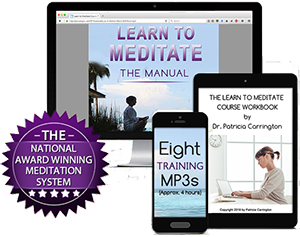 Learn to Meditate Course
Learn to Meditate Course
Recipient of the National Health Association Award for the Best Corporate Stress Management Program of the Year, the Learn to Meditate Course represents the simplest, safest, and most authoritative, affordable form of in-home- meditation instruction presently available for the general public.
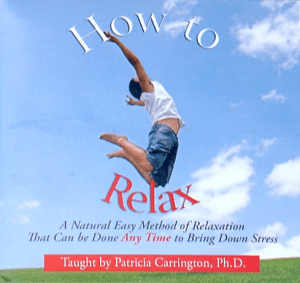 How to Relax MP3
How to Relax MP3
The How to Relax audio differs from most other relaxation training in that it does not teach you how to relax while sitting or lying down, but while you are in action.
Learn how to relax first, then how to remain fully relaxed while running, swimming, typing on a keyboard, answering the phone, or whatever else you have to do during the day. This can lead to improved performance in whatever activity you are engaged in and it can certainly make you healthier. ![]()



